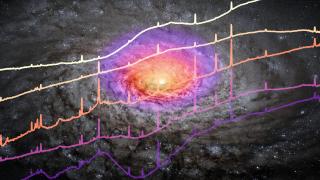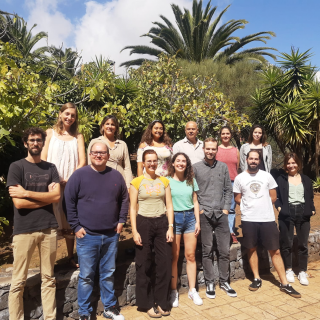Bibcode
Avirett-Mackenzie, M. S.; Villforth, C.; Huertas-Company, M.; Wuyts, S.; Alexander, D. M.; Bonoli, S.; Lapi, A.; Lopez, I. E.; Ramos Almeida, C.; Shankar, F.
Referencia bibliográfica
Monthly Notices of the Royal Astronomical Society
Fecha de publicación:
3
2024
Número de citas
5
Número de citas referidas
2
Descripción
Supermassive black holes require a reservoir of cold gas at the centre of their host galaxy in order to accrete and shine as active galactic nuclei (AGN). Major mergers have the ability to drive gas rapidly inwards, but observations trying to link mergers with AGN have found mixed results due to the difficulty of consistently identifying galaxy mergers in surveys. This study applies deep learning to this problem, using convolutional neural networks trained to identify simulated post-merger galaxies from survey-realistic imaging. This provides a fast and repeatable alternative to human visual inspection. Using this tool, we examine a sample of ~8500 Seyfert 2 galaxies ($L[\mathrm{O\, {\small III}}] \sim 10^{38.5 - 42}$ erg s-1) at z < 0.3 in the Sloan Digital Sky Survey and find a merger fraction of $2.19_{-0.17}^{+0.21}$ per cent compared with inactive control galaxies, in which we find a merger fraction of $2.96_{-0.20}^{+0.26}$ per cent, indicating an overall lack of mergers among AGN hosts compared with controls. However, matching the controls to the AGN hosts in stellar mass and star formation rate reveals that AGN hosts in the star-forming blue cloud exhibit a ~2 × merger enhancement over controls, while those in the quiescent red sequence have significantly lower relative merger fractions, leading to the observed overall deficit due to the differing M*-SFR distributions. We conclude that while mergers are not the dominant trigger of all low-luminosity, obscured AGN activity in the nearby Universe, they are more important to AGN fuelling in galaxies with higher cold gas mass fractions as traced through star formation.
Proyectos relacionados

Actividad Nuclear en Galaxias: una Perspectiva 3D del Núcleo y su Entorno
Nuestro proyecto puede dividirse en dos líneas principales de investigación. En primer lugar, el estudio de los vientos producidos por cuásares luminosos oscurecidos y del impacto que estos tienen en sus galaxias anfitrionas (retroalimentación del AGN). Para ello hemos obtenido observaciones en el óptico e infrarrojo cercano con el Gran Telescopio
Cristina
Ramos Almeida

Huellas de la Formación de las Galaxias: Poblaciones estelares, Dinámica y Morfología
Bienvenida a la página web del g rupo de investigación Traces of Galaxy Formation. Somos un grupo de investigación amplio, diverso y muy activo cuyo objetivo principal es entender la formación de galaxias en el Universo de una manera lo más completa posible. Con el estudio detellado de las poblaciones estelares como bandera, estamos constantemente
Anna
Ferré Mateu